Introduction
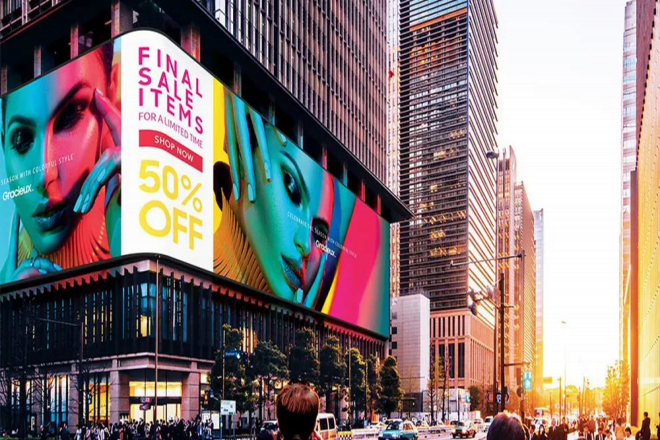
Outdoor LED displays have become an indispensable part of the urban landscape. They are not only used for advertising displays but also widely for the release of various public information and notices.
However, in the face of a wide range of products on the market, how do you choose a suitable outdoor LED display screen? Here are some shopping tips for your reference.
1. Clarify your needs
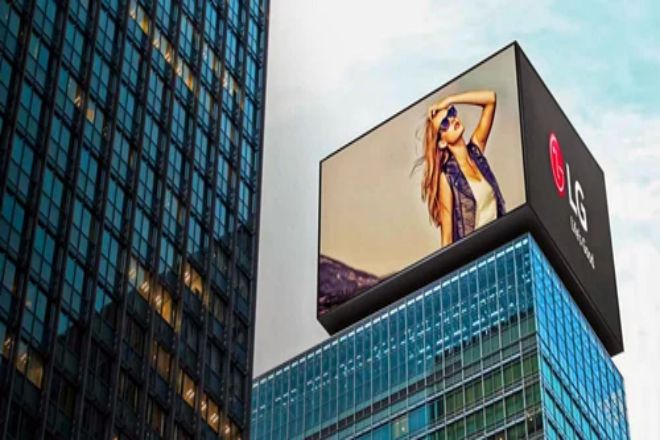
- Select the size according to the application scenario:
You need to determine the size of the display according to the application scenario. For example, if the display screen is used for commercial advertising, a larger size may be needed to attract the attention of passers-by. If it is used for public information release, it may pay more attention to the clarity and readability of the information, and the size can be appropriately smaller.
- Determine the resolution according to the viewing distance:
The choice of resolution needs to be determined according to the distance between the audience and the display. Generally speaking, the farther the viewing distance, the higher the resolution required to ensure that the picture is clearly visible. Therefore, when choosing an outdoor LED display, you need to choose the appropriate resolution according to the actual viewing distance.
- Consider the impact of size and resolution on the display effect:
The choice of size and resolution will directly affect the display effect. If the size is too large and the resolution is too low, the picture may be blurred and unclear; if the size is too small and the resolution is too high, although the picture is clear, it may not attract the attention of the audience because the size is too small.
Therefore, when selecting size and resolution, we need to consider these factors comprehensively to achieve the best display effect.
- Brightness requirements:
Outdoor LED displays need to withstand various bad weather conditions, among which the impact of light is particularly significant. Therefore, brightness is an important factor to be considered in the purchase process of outdoor LED displays.
Generally speaking, the higher the brightness, the more clearly visible the display screen under strong outdoor light. However, excessive brightness may also cause discomfort to the audience’s vision, so it is necessary to control the appropriate brightness while ensuring visibility.
- Requirements for color reproduction:
Color restoration refers to the ability of the display screen to truly restore the color of the original image. For commercial advertising, the choice of color reproduction is particularly important. If the color reduction is too low, the advertising screen may have color distortion, color deviation, etc., which not only fails to attract the attention of the audience but may also have a negative impact on the brand image.
Therefore, when choosing an outdoor LED display, we need to choose products with high color reproduction to ensure the maximum advertising effect.
2. Consider your installation environment.
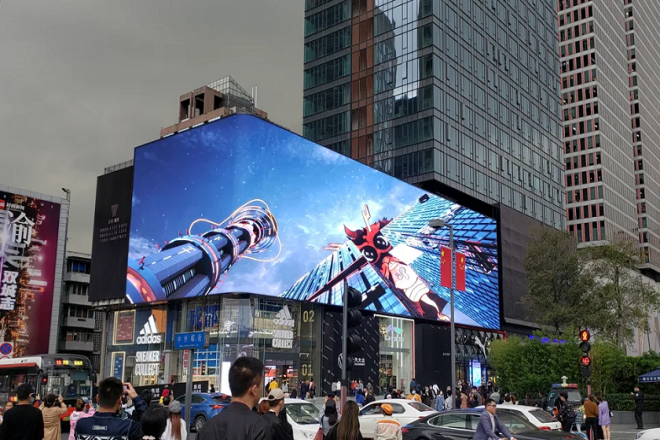
When choosing an outdoor LED display, in addition to paying attention to the display needs, it is also necessary to fully consider its installation environment. Different environments have different requirements for the protection level and installation method of the display screen.
1). Analyze the installation environment:
Climatic conditions: Consider the climatic conditions of the installation site, such as temperature, humidity, wind, etc. These factors will directly affect the selection of the protection level of the display.
Light conditions: Consider the light intensity and time of the installation site. Strong light may cause the display to reflect or distort the color, so you need to choose a display with high brightness and good color restoration.
Space limitation: Consider the space limitation of the installation site, such as installation height, width, etc. This will affect the size of the display and the choice of installation method.
2). Selection of protection level:
The protection level of the LED display can range from IP00 to IP68, where IP is the abbreviation of Ingress Protection, which represents the protection level.
IP00: No protection; this is the lowest protection level.
IP20: Dustproof, but it has limited protection against some harsh environments (such as sandstorms, fog, etc.).
IP40: Dustproof and waterproof, but it has limited protection against some harsher environments (such as high temperature, low temperature, etc.).
IP65/IP66: Waterproof, dustproof, salt-proof, can resist more serious external erosion.
IP67/IP68: Waterproof, dustproof, anti-soaking, can resist more serious external erosion.
3. Choice of quality
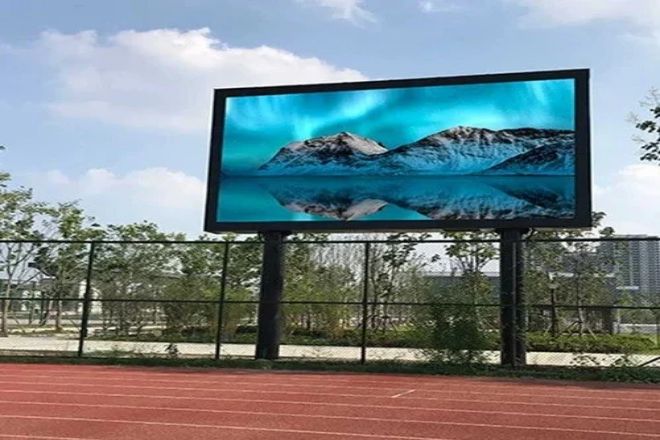
When choosing an outdoor LED display, it is essential to know and evaluate the specifications and performance of the product in detail. This is not only to ensure that the display can meet the current needs but also to ensure that it can run stably in various complex outdoor environments and show the best results.
First of all, the LED chip is the core part of the display. We need to have an in-depth understanding of the model, performance parameters, packaging process, etc., of the LED chip. High-quality LED chips often have a longer service life, higher brightness, and more stable color performance.
At the same time, its packaging process will also affect the waterproof, dustproof, and other performance of the display screen.
Next is the driver IC, which is the key to controlling whether each pixel is lit. We need to evaluate the driving capacity, stability, power consumption, and other performance parameters of the driver IC.
Especially in the outdoor environment, the driving IC needs to be able to withstand high temperatures, high humidity, and other harsh conditions to ensure the stable operation of the display screen.
The power system provides a stable power supply for the display screen, and its quality is directly related to the stability and life of the display screen. Therefore, we need to choose a safety-certified power supply system and ensure that it has a high temperature, high humidity, lightning protection, and other protection functions.
The efficiency and stability of the power supply system also need to be evaluated.
In addition, the control system is the brain of the display screen, which is responsible for processing image signals and controlling the display content. We need to choose a control system with stable performance and easy operation and ensure that it can support a variety of signal input formats and display modes.
At the same time, the compatibility and scalability of the control system also need to be considered to adapt to possible technical upgrades and changes in the future.
After understanding and evaluating these hardware components, we also need to ensure that they meet the requirements of the outdoor environment.
This includes waterproof, dustproof, lightning protection, and other properties, as well as high brightness, high definition, high stability, and other characteristics. The outdoor LED display needs to be able to resist the impact of natural environments such as wind, rain, sand, and dust and maintain a clear display effect in strong sunlight.
4. Consider the later maintainability and upgradeability.
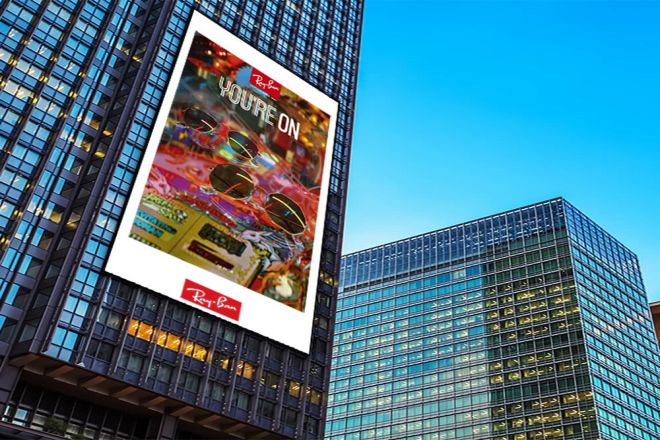
The following are the two factors that affect these two. You must understand them clearly before purchasing LEDs:
- Are there enough spare parts prepared to prevent later replacement?
The availability and adequacy of spare parts are critical to the smooth progress of maintenance. If the supplier can provide sufficient spare parts and quickly provide replacement when needed, it will greatly reduce maintenance time and cost.
- Is it a modular design? Can you quickly determine the damaged place?
The modular design means that each part of the display can be replaced independently without the need for overall replacement. This design can quickly identify the damaged area and repair it quickly, thus improving maintenance efficiency.
- Do you support technical guidance after purchase?
If the supplier can provide comprehensive technical support, including troubleshooting, maintenance guidance, and software updates, this will greatly reduce the difficulty and cost of maintenance.
- In addition, we should also consider the content compatibility of the LED display.
Content compatibility means that the display can support various formats and types of input content, including text, images, and videos. Ensure that the display has a wide range of content compatibility and can be easily connected and integrated with various devices and software, thus improving upgradeability and scalability.
5. Understand the price and cost performance
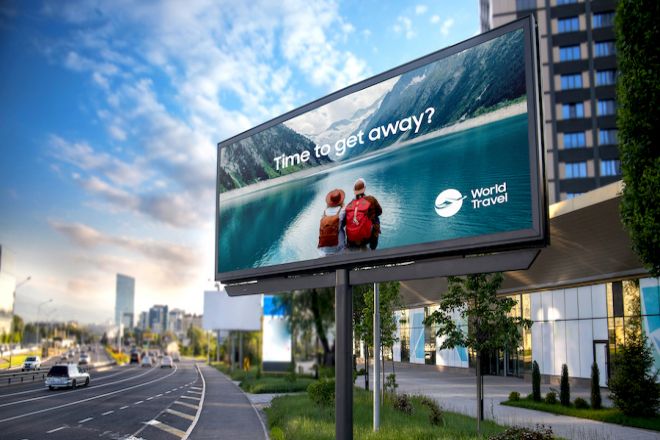
Price is usually one of the key factors in the purchase decision, and the cost performance reflects the overall value of the product and the balance between performance and price.
First of all, it is necessary to clearly understand the price composition of the LED display. The price may vary according to many factors, including the size, resolution, brightness, color performance, brand awareness, and technological advancement of the display.
In addition, other related costs need to be considered, such as installation costs, transportation costs, and after-sales service costs. Therefore, before purchasing, be sure to communicate with the supplier in detail, clarify the costs, and ensure a reasonable quotation.
Secondly, it is necessary to evaluate the cost performance of the LED display. Cost performance is an important indicator to evaluate the overall value of the product. It comprehensively considers the performance, quality, and price of the product.
When evaluating the cost performance, you can compare LED displays of different brands, models, and specifications to understand their performance differences and price differences. At the same time, you can also refer to the evaluation and use the experience of other users to obtain more comprehensive information.
6. When comparing price and cost performance, you need to pay attention to the following points
Don’t just look at the price, but also consider the overall value of the product. Low-priced products may have poor performance or unstable quality, and high-priced products may not be the best choice.
Don’t just look at a single performance indicator, but comprehensively evaluate the performance of the product. For example, in addition to brightness, resolution, and color performance, factors such as reliability, stability, and service life of the display should also be considered.
Pay attention to the evaluation and use experience of other users. This information can help you have a more comprehensive understanding of the performance and cost performance of products so as to make more informed purchase decisions.
Conclusion
The above is the whole content of this article. If you want to know a lot more, please consult us!
